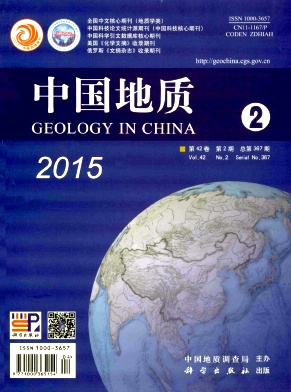ZHAO Shuang-feng1, 2, ZHANG Zhi-huan1, 2, LI Wen-hao3, LIU Xing1, 2, JIANG Li-na1, 2. Accumulation process and characteristics of gas reservoirs in the Penglaizhen Formation of Shifang area, Western Sichuan Depression[J]. Geology in China, 2015, 42(2): 515-524.
| Citation: |
ZHAO Shuang-feng1, 2, ZHANG Zhi-huan1, 2, LI Wen-hao3, LIU Xing1, 2, JIANG Li-na1, 2. Accumulation process and characteristics of gas reservoirs in the Penglaizhen Formation of Shifang area, Western Sichuan Depression[J]. Geology in China, 2015, 42(2): 515-524.
|
Accumulation process and characteristics of gas reservoirs in the Penglaizhen Formation of Shifang area, Western Sichuan Depression
-
1. China University of Petroleum, Beijing 102249, China; 2. State Key Laboratory of Petroleum Resource and Prospecting, China University of Petroleum, Beijing 102249, China; 3. Research Institute of Unconventional Petroleum and Renewable Energy, China University of Petroleum, Qingdao 266580, Shandong, China
-
Abstract
Abstract: Gas reservoirs in the Penglaizhen Formation within Shifang area of Western Sichuan Depression are shallow sub-tight sandstone secondary ones, whose formation mechanism differs from that of tight sandstone gas reservoirs in the underlying Xujiahe Formation. Lithologic gas reservoirs occur mainly in the study area. Gas is concentrated in the middle and upper Penglaizhen Formation with high dry coefficients. Gas is mainly from coal-measure source rock in the underlying Xujiahe Formation, with a bit originating from the original reservoirs suffering from adjustment and transformation. Anyhow, it is dominated by coal-type gas. Fluid inclusion analysis shows that there are three stages of thermal fluid flow in the Penglaizhen Formation, with the first two stages being respectively liquid hydrocarbons and gas liquid mixture of hydrocarbons charge without large-sized reservoirs and the third being large-scale natural gas filling whose corresponding accumulation time was from late Cretaceous to early Paleogene (78-34 Ma). On such a basis and in combination with the tectonic evolution, the stages of hydrocarbon generation and expulsion, reservoirs densification and source-reservoir-cap assemblages, the authors determined the formation and accumulation characteristics of gas reservoirs in Penglaizhen Formation. The lower part reservoir of Penglaizhen achieved densification during the Late Cretaceous. During the Himalayan Movement, Xujiahe gas reservoir was adjusted and renovated, and the earlier-formed deep faults were extended. A lot of deep gas source migrated upward to the upper part of Penglaizhen along faults, thus forming the shallow secondary gas reservoirs.
-

-
-
Access History







 DownLoad:
DownLoad: